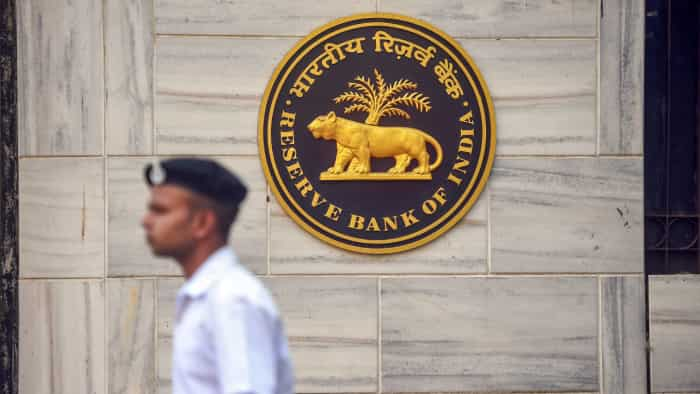US Fed's rate hike aftermath! Sensex, Nifty in red; Should Indian markets and rupee worry?
Investors continued to have bearish sentiments regarding Indian benchmark indices Sensex and Nifty, which have lost more than 280 points and 50 points respectively in today’s trading session.

Investors continued to have bearish sentiments regarding Indian benchmark indices Sensex and Nifty, which have lost more than 280 points and 50 points respectively in today’s trading session. At around 1237 hours, Sensex was trading at 36,315.74 down by 168.59 points or 0.46%, whereas Nifty 50 was below by 49.25 points or 0.45%, trading at 10,918.05. Such poor performances can be blamed on US Federal Reserves, which, in its December 2018 policy, made a decision to hike policy repo rate by another 25 basis points - the fourth hike this year.
Where Indian markets were taking investors heat, on the other hand, the domestic currency was performing quite differently. The Indian rupee kicked off today’s trading session by depreciating 24 paise to 70.63 against US benchmark dollar index in early trade at interbank forex market. However, it did not take long for rupee to reverse its trend, as it is currently trading at 70.500 appreciating by 0.500 points or 0.71% against dollar.
#Exclusive | 2019 में कैसी रहेगी बाज़ार की चाल, क्या #GlobalMarketCues और #TradeWar की टेंशन बिगाड़ेगी बाज़ार का मूड जाना राहुल सिंह ने कोटक इंवेस्टमेंट बैंक के MD, एस रमेश से।@AnilSinghviZEE @rahul_jour @SwatiKJain pic.twitter.com/nbbqS5X21W
— Zee Business (@ZeeBusiness) December 20, 2018
So what is in store ahead for Indian markets and rupee in aftermath of US Fed policy.?
According to Anindya Banerjee, analysts at Kotak Institutional Equities this is how US Fed’s decision looks on USD.
- They signalled two more hikes in 2019, instead of 3 indicated before: Negative for USD
- Dished out downgrades to 2019 growth and inflation outlook: Negative for USD
- Risks are roughly balanced and path of rates data dependent: Neutral for USD
- Decision to hike Unanimous: Positive for USD and negative for global equity markets
- They acknowledged that financial conditions have tightened as stock market has fallen but that did not have material impact on their outlook for rates or economy: Positive for USD and negative for global equity markets
- Reached the bottom end of the neutral zone: Marginally negative for the US Dollar
- Balance sheet unwind to continue on an auto-pilot basis, not deterred by market decline: Positive for USD and negative for global equity market
Banerjee said, “The Fed did hike all right, raising interest rates by 0.25% from <2.25% to <2.50% but gave little indication that they could hit the brakes on tightening anytime soon.” But Banerjee also believes that all in all it appears like a balanced policy.
However, Banerjee adds, what spooked the Dollar shorts was the sharp decline in US equity markets post policy. Yield curve continues to bear flatten in US and the stock markets are declining, a clear recipe for tightening financial conditions.
Talking about emerging markets, Banerjee explains that, they tend to fare poorly in such environment. However, India is benefitting from the ongoing collapse in oil prices.
But before India can rejoice the decline of crude oil prices, Banerjee says, “keep in mind, the fall in global oil prices along with fall in global equities is not a template which works well for the Rupee and Indian equities for long.”
In Banerjee’s view, during 2015 and early 2016, a similar template of falling oil prices along with tanking global equities knocked the wind out of Indian equity markets and hence the Rupee. Rupee lost ground against USD then but went onto score gains against almost all other major currencies around the globe.
Finally, Banerjee adds, “Such a situation may not repeat but it pays to keep that situation in mind.”
Get Latest Business News, Stock Market Updates and Videos; Check your tax outgo through Income Tax Calculator and save money through our Personal Finance coverage. Check Business Breaking News Live on Zee Business Twitter and Facebook. Subscribe on YouTube.
RECOMMENDED STORIES

Katra-Srinagar Vande Bharat Train: Northern Railway announces train timings; check fare, route and other key details

Latest SBI Senior Citizens FD Rates: What will you get on maturity if you invest Rs 9,89,898, Rs 8,78,787, and Rs 6,56,565 in Amrit Vrishti, 1-, 3-, and 5-year FDs?
01:05 PM IST










 Return of investor interest to China, erratic monsoon poses challenges for Indian markets: Experts
Return of investor interest to China, erratic monsoon poses challenges for Indian markets: Experts As Fed holds key rate after 15 months, 10 things to know before opening bell on D-Street
As Fed holds key rate after 15 months, 10 things to know before opening bell on D-Street From global cues to US inflation, 10 things to know before the opening bell today
From global cues to US inflation, 10 things to know before the opening bell today From global cues to macro data, 10 things to know before the opening bell today
From global cues to macro data, 10 things to know before the opening bell today FPI flows will improve; multinationals have high interest in Indian markets: Ridham Desai
FPI flows will improve; multinationals have high interest in Indian markets: Ridham Desai